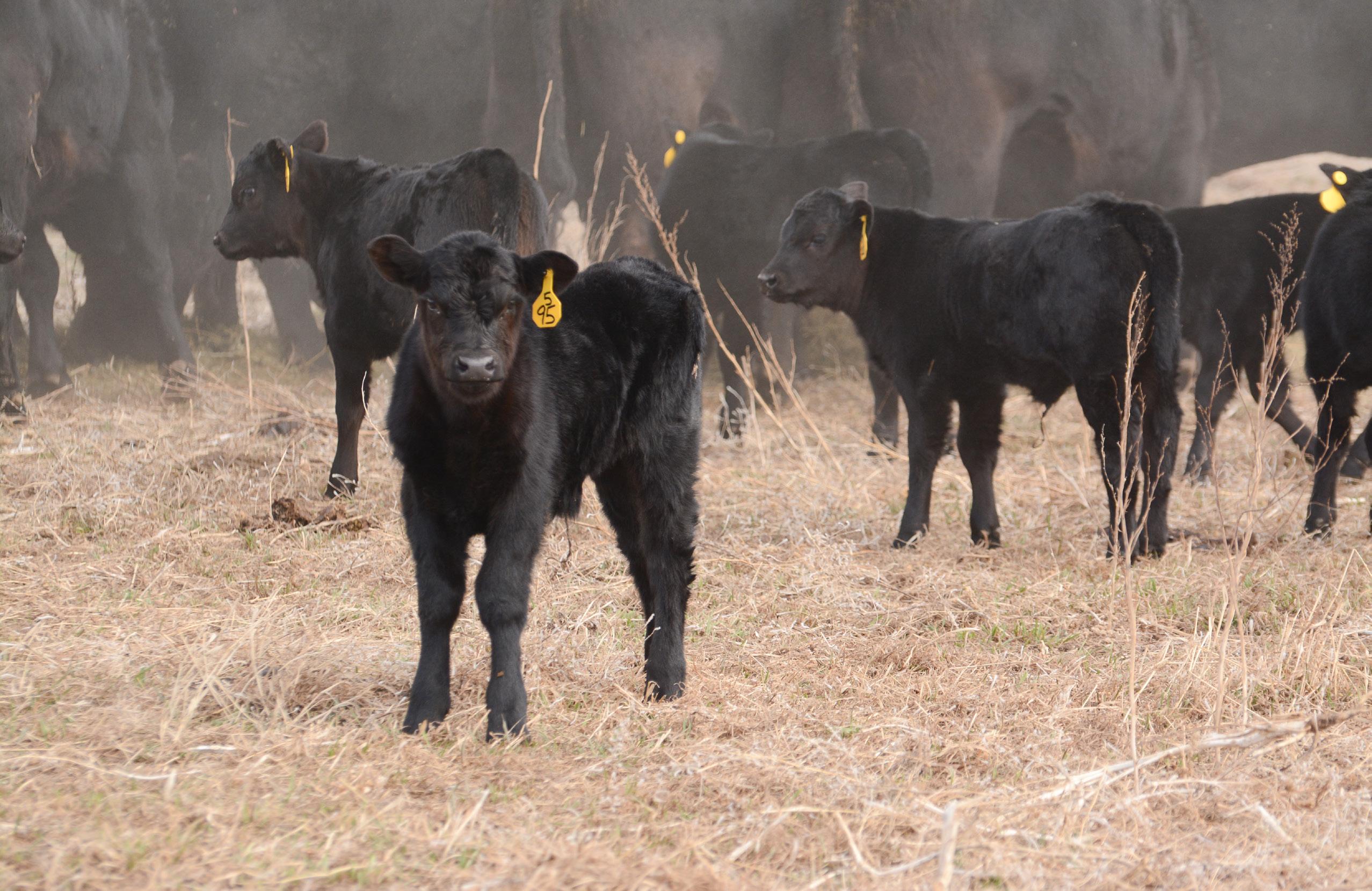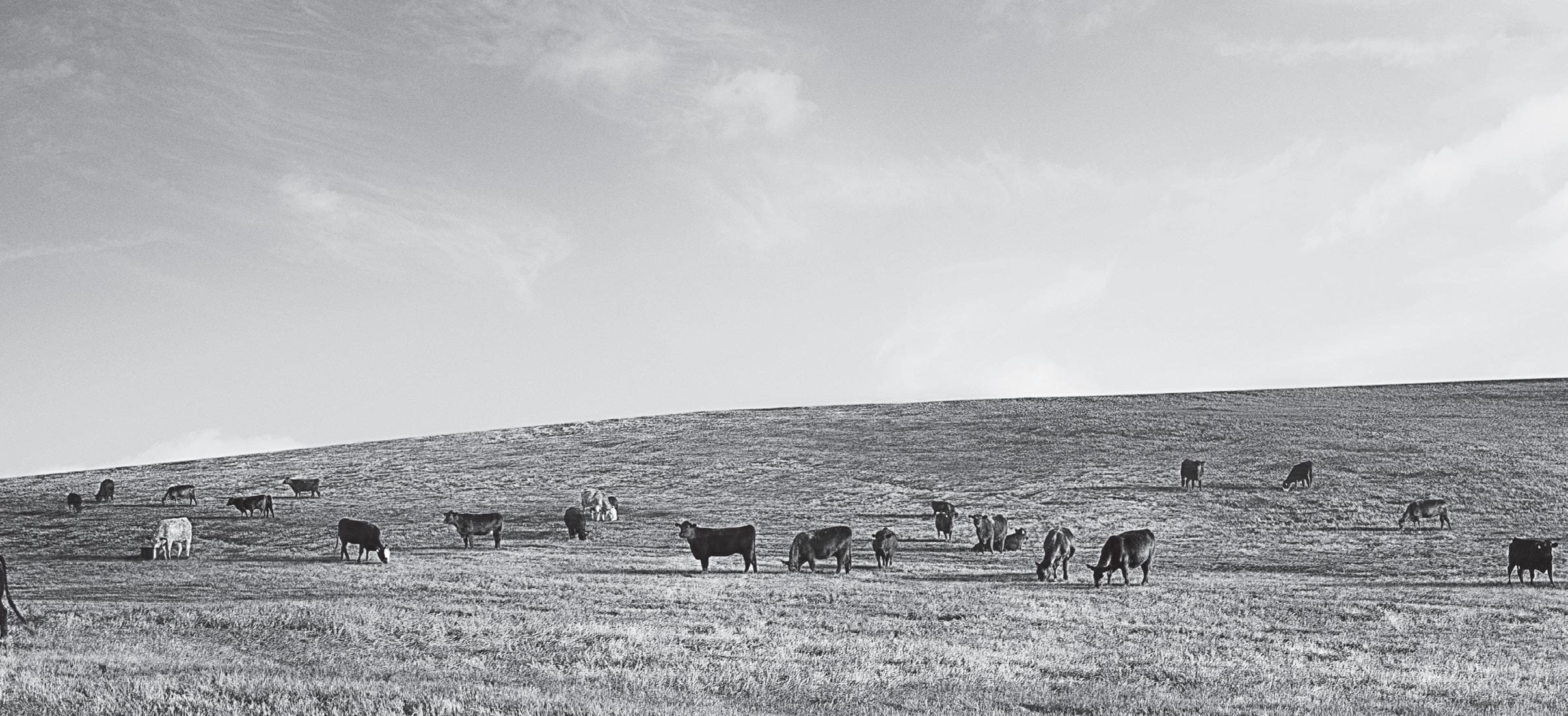
3 minute read
Calf Comfort for Newly Weaned Calves
By: Dr. Dan Thomson, Kansas State University
Cattle on range can find natural windbreaks, dry hills and other more comfortable areas during inclement weather. However, animals in intensive rearing operations are dependent on man to help provide animal comfort which is essential to health and performance of food animals.
Animal welfare specialists in North America have indicated that environmental stresses such as mud level or heat stress are major concerns for confinement cattle. Providing relief from environmental stress in confinement operations or weaning pens can improve cattle health and performance.
Cattle comfort begins immediately after newly weaned calves arrive. Long haul calves want to lie down and rest before rehydrating immediately after arrival at the facility. Wet, muddy pen floors wind up costing us a lot of money and decrease the health status of the calves because cattle can not lie down and rest after their trip.
The use of dirt mounds, concrete pads and pen grooming are imperative in fall and winter months for calf and cow comfort. The smaller the animals, the more important the pen comfort becomes. However, mud can increase the cost of production for cattle in all segments of the beef industry.
In emergency situations, applying bedding materials like straw or gin trash can provide comfort to cattle to lie down.
Also, in these situations a producer can groom part of the pen instead of the whole pen to decrease the time needed to attend to all cattle at the facility during the time of inclement weather.
Stocking density can be very important to animal health areas ranging from biosecurity to management. Higher risk cattle are generally assigned to smaller pens on a per head basis than cattle that are at a lower risk to get sick from respiratory disease.
Generally, we will assign them to a pen that is big enough to house the animals from a single truck load to prevent further commingling at the feedlot (85 to 100 head). Also, in these smaller pens it is easier for feedyard personnel to manage cattle health.
Large pens are difficult to manage the health of the cattle as we look for individuals that are sick or injured. With the phenotypes, or coat color, of cattle becoming more uniform in the beef industry, it is harder to identify individual cattle that a pen rider might want to follow up on in the pen.
We conducted a survey of beef cattle veterinarians in 2009. In this survey, practitioners indicated that they recommend a pen that houses 100 head of high risk cattle for optimum health and performance outcomes. (Terrell et al., 2011). This is smaller than the 200 and 400 head pens that we have been utilizing because of their ease to deliver feed to many animals in a shorter period of time.

Pen spacing is something that used to only be considered in our industry for animal performance. The more observations of cattle and population medicine, the more important feed bunk space, pen space and sorting of animals have become in feedlot practice.
We have seen reports of backgrounders or cattle feeders placing high risk cattle into pens with 6 inches of bunk space per head. These types of situations are difficult for the smaller cattle in the pen.
Limited bunk space will decrease the ability of smaller, more timid animals a chance to eat, drink or find a comfortable place to get out of the elements. Management of the smallest animals on arrival could be an area of management that could be very important to decreasing death loss in newly weaned calves.
The same survey of feedlot veterinarians as mentioned above showed that practitioners recommend an average bunk space requirement for high risk calves is 12 to 18 inches (mean = 13 inches) of bunk space per calf (Terrell et al., 2011).
Our recommendation for bunk space is that enough is given so all cattle can eat at the bunk at once. These recommendations on bunk space for feeder cattle change as the health status and social hierarchy of the pen changes as cattle grow larger.
High risk calves or newly weaned calves require a comfortable environment for optimal health and performance. Muddy conditions, limited pen space and limited bunk space will decrease feed intakes in calves and decrease the efficiency in which the calves utilize the feed in which they do consume. Sick cattle don’t eat and cattle that don’t eat get sick.
Managing the pen floors and the bunk space are imperative getting cattle off to a good start.










